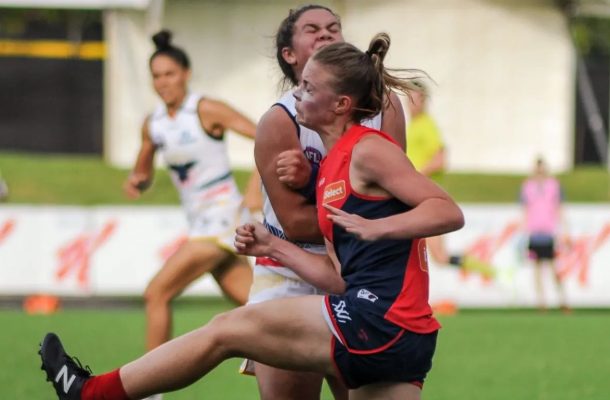When a footballer is concussed, there’s currently no way, clinically, to determine when it’s safe for him or her to return to play. Rather, clinicians (if they’re available) have to rely on tests monitoring cognitive and self-reported symptoms such as dizziness.
A world-first clinical trial being conducted at Monash University’s recently opened Department of Neuroscience wants to provide both elite and community AFL clubs, and other contact sports, with a series of tests that can be performed to determine when a player is fully recovered from concussion.
Recently published data reveals that many players are returning to play before their concussion has been resolved.
According to Professor Terence O’Brien, the head of the department, athletes who return to play before recovering from concussion – and receive another hit to the head while in this vulnerable state – are at increased incidence of long-term neurodegenerative issues, “so we need a sure-fire way on knowing when the player is safe to go back on the field”, he said.
Associate Professor Sandy Shultz and his team at the Department of Neuroscience have been running the first cohort study of more than 100 male and female players with Melbourne University amateur football clubs.

Players underwent a wide range of tests before the start of last season: neurocognitive; MRI; saliva and blood tests; eye movement. This baseline data is then tested after every concussion a player receives.
The researchers were looking for fluid, MRI, and/or ocular motor biomarkers that could accurately and objectively diagnose a sports-related concussion, as well as determine when the brain had recovered from the concussion and it was safe for the athlete to return to play.
The hypothesis is that fluid, MRI, and/or ocular motor biomarkers will be more sensitive than the subjective methods that are currently used, Associate Professor Shultz said.
The study is in its third year. According to the Australian Football League, which is a partner in the study, rates of concussion across all levels of competition are about six to seven injuries per team per season.
Preliminary data indicates that women football players are more vulnerable to concussion than men.
Initial results suggest that current asymptomatic amateur Australian rules football players with a history of sports-related concussion may have subtle, persisting cognitive changes that are being missed by conventional testing.
The trial’s first results were published early last year in the Journal of Neurotrauma.
The Shultz group studied eye movement, cognitive and magnetic resonance imaging (MRI) measures to assess for neurological abnormalities in 15 male Melbourne University Blacks players with a history of sports-related concussion (SRC) greater than six months previously.
The control group consisted of sex, age and education-matched athlete subjects who had no history of neurotrauma or participation in collision sports.
Despite no group differences on conventional neuropsychological tests and MRI measures, Australian rules football players with a history of SRC performed significantly worse on an oculomotor switch task – an eye movement test that measures cognitive and inhibitory control by testing how well an individual can switch between looking at and away from a target.
Importantly, worse performance on this task was directly correlated to poorer performance on a number of neuropsychological measures of inhibitory function.
According to Associate Professor Shultz, these initial results suggest that current asymptomatic amateur Australian rules football players with a history of SRC may in fact have subtle, persisting cognitive changes that are being missed by conventional testing, and may lead to concussed athletes returning to play before their brains have fully recovered.
This article was published by Lens.















